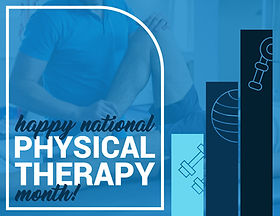Avoid Common Spring Workout Mistakes
- Arthritis & Sports
- May 5, 2016
- 3 min read
Updated: May 26, 2021

It's easy for exercises to become monotonous, and many will be looking to change things up as you move closer to summer. Whether you’re wanting to try something new inside or outside, it’s important to have a thorough understanding of the fundamentals before jumping in. Switching up your workout routine can be very beneficial to your overall health and fitness, by emphasizing different muscles in new ways. However, it's important to have a complete understanding of the techniques and equipment needed before jumping into a new exercise so that you can remain injury-free.
Just like you wouldn’t jump from being a couch potato to a marathon runner in a day, gradual progression is key to avoiding injuries. Having a mental picture of what you want to accomplish this summer can help you plan out the steps you need to take. If your goal is to run a half marathon or participate in a 5k fun-run, you need to have a weekly schedule for how many miles to run and at what intensity.
Even for those that kept us with their training over the winter by using treadmills and ellipticals, the outdoors presents different challenges to adjust to. Uneven and rocky terrain, wind resistance, and obstacles like other people, bikes, and cars are all challenges that you won’t encounter while training in the gym. Too much, too soon can land you in the doctor’s office, stopping or even reversing the progress that you’ve made.
It’s not just runners that are at risk for injury. While overuse injuries such as ‘runners knee’ and Achilles tendonitis are common, so are rotator cuff and elbow injuries. Athletes and weekend warriors alike need to slowly progress into their sports during their pre-seasons. It’s important to not go from zero or little exercise to a high level without allowing your body to adjust to the increased exercise load your placing on your body. Working on movement patterns that are similar to those you will have to complete on the field will not only help you avoid injuries later on but will also help you become a better athlete.
So what can you do in order to help prevent an injury from occurring? While progression is very important, so is proper stretching. A recent study showed that patients with hamstring tightness were almost 9 times more likely to experience symptoms of plantar fasciitis, a common running injury associated with pain in the bottom of the foot (Labovitz, 2011). Performing a dynamic warm-up that involves both the lower and upper body can not only help you avoid injuries but can also increase sports performance.
For those looking to apply a simple, safe change to their gym routine, try incorporating a new plane of motion to your lifts. Using seated workout machines allows you to safely lift heavier weights in the correct range of motion, but only using these machines can cause muscle imbalances and predispose your body to injury. Using a variety of workout methods and techniques allows your body to work out in a way that’s similar to how you use it in your everyday life while also presenting a different challenge for your body to adapt to.
For some easy ways to change your routine, try incorporating side-to-side exercises and rotational movements. This will help prepare your body for the variations in the terrain you may encounter while outside. If you’ve spent most of the winter lifting weights and avoiding cardio, try adding biking or swimming to your routine. Challenging your body to try something new will help keep your body balanced by strengthening different muscle groups.
Sidelined by a sports injury or orthopaedic condition? Our award-winning fellowship-trained providers are here to help you return to your active life! We invite you to call us at 703.444.5000 or click here to request an appointment with one of the physicians at Arthritis & Sports. To stay up-to-date on the latest news and tips from us, be sure to follow us on Facebook and Instagram, and sign up for our monthly newsletter for even more information sent straight to your inbox!
References:
Labovitz, J and Kim,C. The Role of Hamstring Tightness in Plantar Fasciitis. Foot Ankle Spec. March 2, 2011.


























